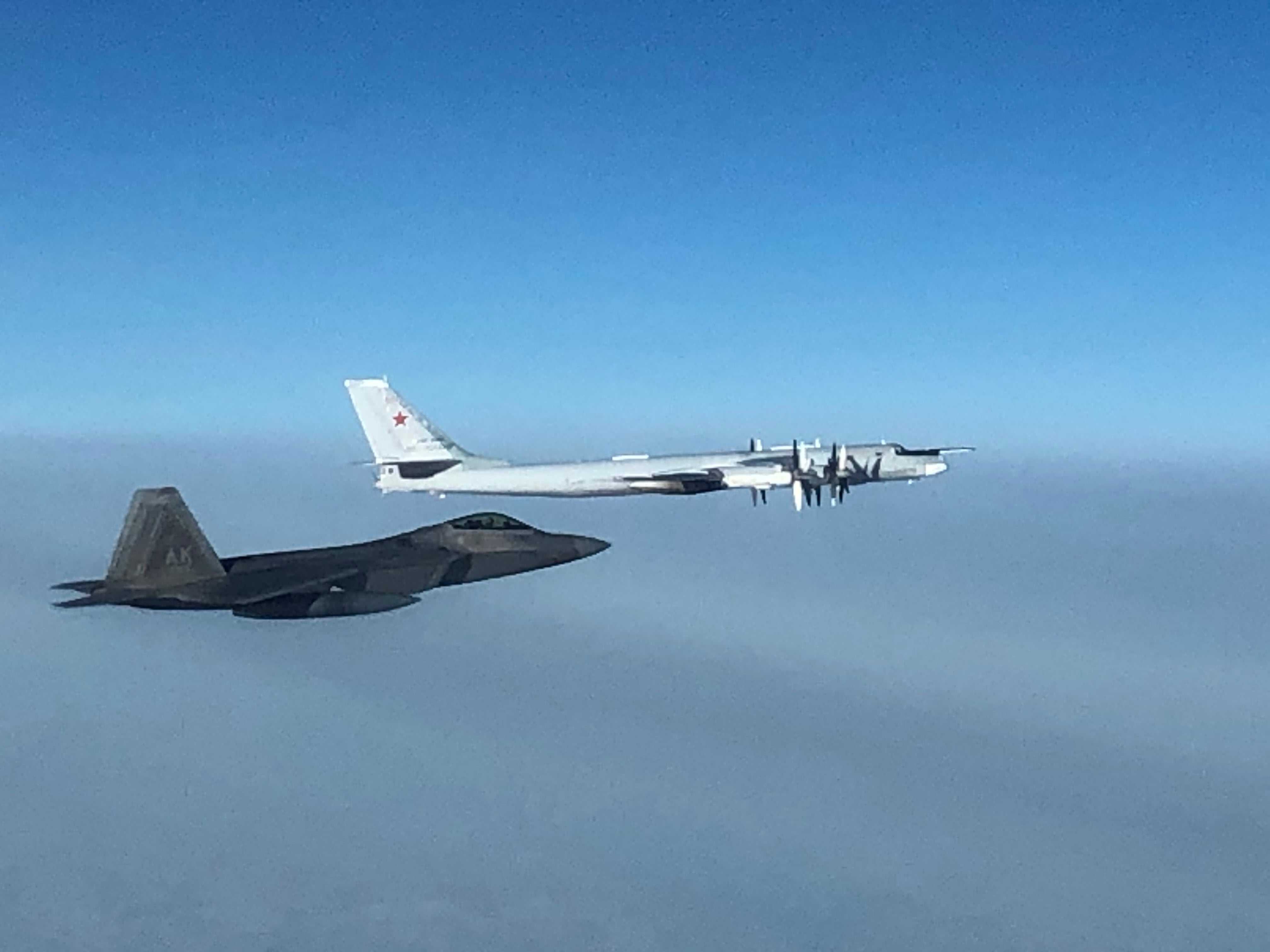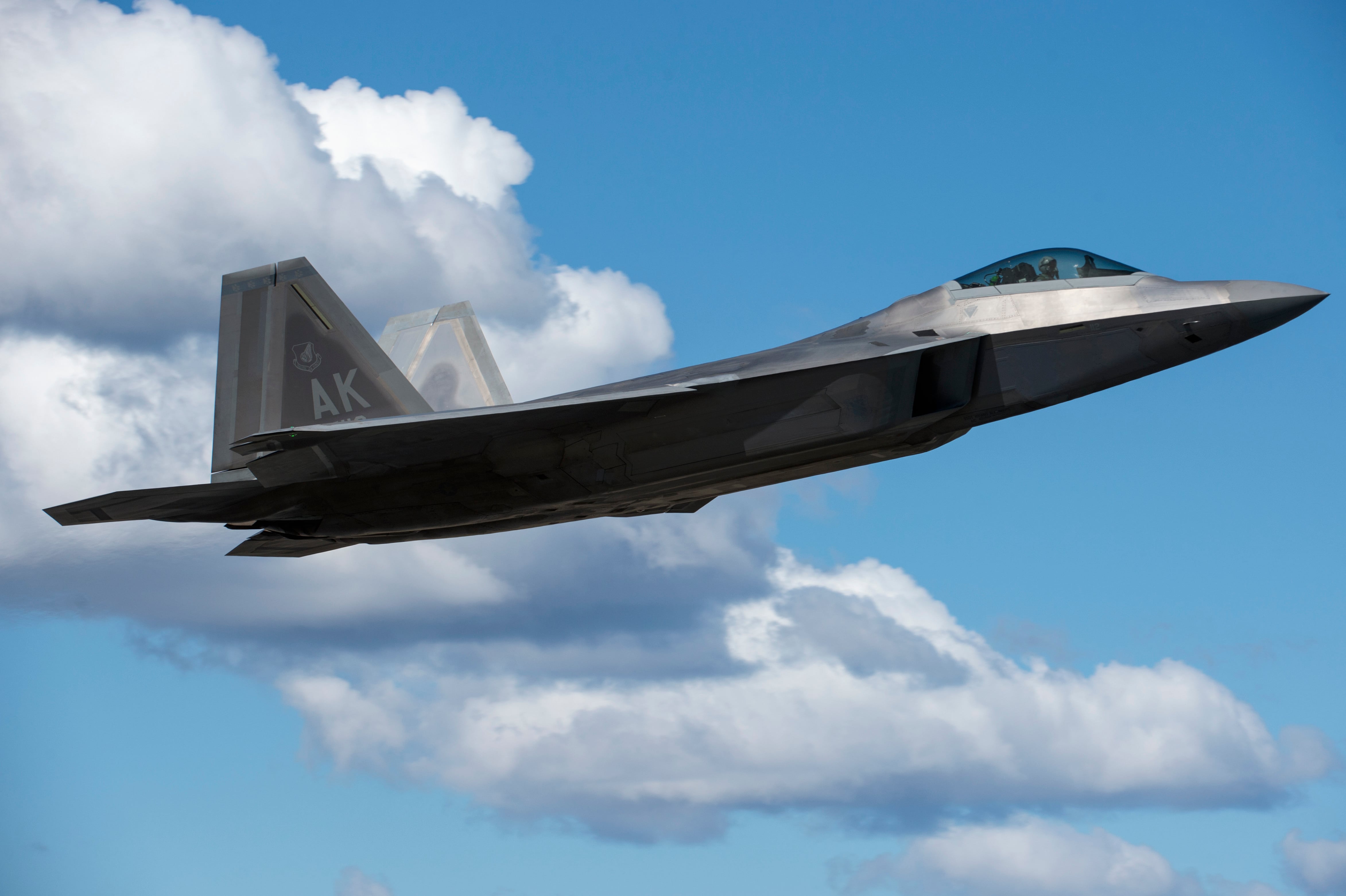This story has been updated with additional information from Pacific Air Forces on participation by the Army and the Space Force.
Ten thousand troops will descend on the High North this spring to practice how the U.S. military might react if simmering tensions in the Arctic reach a boiling point.
The Air Force’s team in the Pacific will lead the Army, Navy and Marine Corps in the biennial, 12-day Northern Edge exercise beginning May 3.
“Northern Edge allows [U.S. Indo-Pacific Command’s] joint force to … put all the pieces of the puzzle together, the big picture, and allow our younger generations within the armed forces to experience what future conflict could feel like, and the complexities associated with it,” Air Force Lt. Col. Michael Boyer, the lead planner for Northern Edge, told reporters Wednesday.
This year’s iteration of Northern Edge comes as Russian military aircraft in 2020 flew near Alaskan airspace “more … than we’ve seen in any year since the end of the Cold War,” according to U.S. Northern Command and North American Aerospace Defense Command boss Gen. Glen VanHerck.
RELATED

A Pacific Air Forces spokesperson declined to provide the scenario those service members will face, saying it needs to remain under wraps to “preserve a degree of realism for the participants.”
“We are looking at what modern warfare could be in the future, and that includes scenarios like [Russian incursion into American airspace,” Boyer said. “Obviously, we see a lot of interest and value in our nation’s interest in the Arctic and we want to make sure that those are protected and preserved in an appropriate manner.”
The military has not yet announced many of the units that will take part, but said it could involve up to 300 or so aircraft. Boyer hinted that the new KC-46 tanker plane will participate, and that the event will involve challenges like setting up a command-and-control site on the fly in a school, using Marine Corps landing crafts to deliver resources to people on land, and limited communications between services.
“In a bandwidth-limited environment, how do we communicate with folks that are spread out there in the sea space?” he said. “The folks that are in the maritime surface component, how do we communicate [with] them from a main operating base or even a spoke?”
It’s the first time the U.S.-only event will incorporate combined operations with an unnamed carrier strike group, the 15th Marine Expeditionary Unit and an amphibious ready group.
The Army will contribute aviation assets, a brigade combat team and High Mobility Artillery Rocket Systems, according to Pacific Air Forces. The Space Force was not expected to participate in the exercise at the time.
RELATED

As Northern Edge participants go through the motions of competition with other world powers, the forum provides an opportunity to try new deployment and training concepts.
“It allows us to conduct some experimentation with either software or new radios or other tactics, techniques and procedures that we want to test,” Boyer said.
Among those ideas are the Air Force’s more flexible approach to basing and moving resources around a region, known as agile combat employment. The service also wants airmen to expand their expertise so that more people can bring a broader range of skills to a fight — offering more knowledge on refueling in the field without requiring a specialized unit, for instance.
“Airmen now need to assume some skills that might not have been traditionally in their lane in an in-garrison approach that we had … over the last 20 or 30 years,” Boyer said.
At Northern Edge, they can learn from other parts of the military that may have better equipment or more thorough training on a particular subject, and work through those issues in person.
“We can bring all that together and say: ‘Aha! You know what, Marine Corps? That fueling equipment you have is way better and much smaller than the one the Air Force has. Let’s see if we can get some exposure between your fuel specialists in the Marine Corps and the Air Force fuel specialists, and then take notes on each other’s equipment and figure out how we can make them interoperable, or at least maybe use the same thing,’ ” Boyer added.
Rachel Cohen is the editor of Air Force Times. She joined the publication as its senior reporter in March 2021. Her work has appeared in the Washington Post, the Frederick News-Post (Md.), Air and Space Forces Magazine, Inside Defense, Inside Health Policy and elsewhere.





